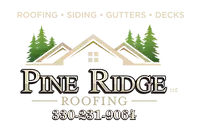Conesville Roof Damage by Weather Conditions and Insurance Claims - A Comprehensive Guide
Your residence is not just a home; it’s a sanctuary. The role of your roof in upholding its safety and security is pivotal. However, when the inevitable roof damage by weather conditions strikes, understanding the various types of damage caused by the elements, mastering the insurance claim process, and implementing effective roof maintenance practices become crucial for safeguarding your investment.
This all-encompassing guide is your companion in navigating through the essentials, empowering you to protect your home and confidently handle “roof damage by weather conditions and insurance claims.”
In Conesville, roof damage resulting from severe weather conditions such as storms, high winds, tornadoes, and hail is a frequent occurrence, and Pine Ridge Roofing is poised to provide support in addressing these issues.
Key Takeaways
Table of Contents
Conesville Roof Damage - Types of Weather-Related Roof Damage
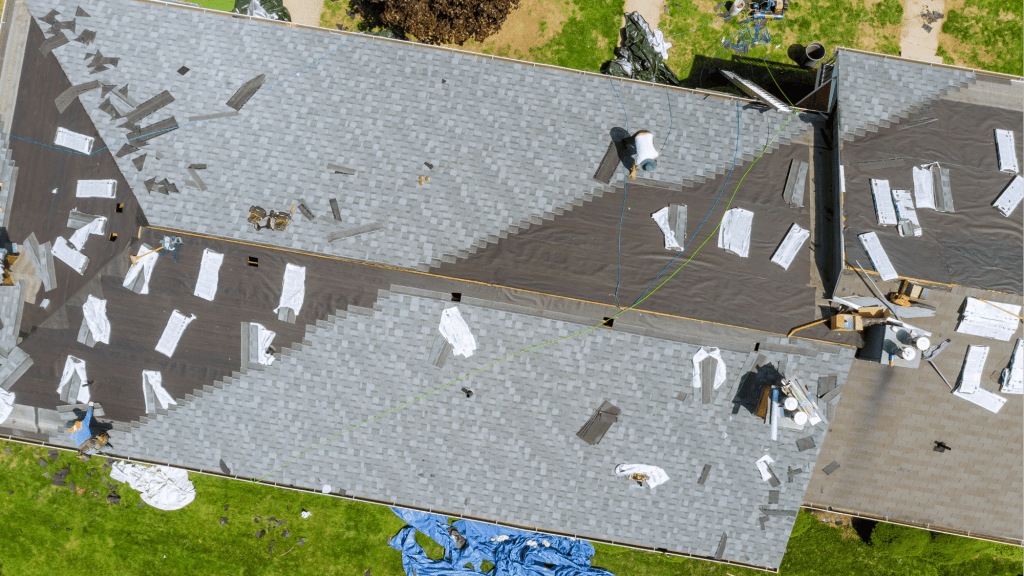
In Conesville, roof damage by weather conditions is really common. Weather can be unpredictable, and it can wreak havoc on your roof. Wind, hail, and rain or snow are the most common culprits of weather-related roof damage, often leading to insurance claims and costly repairs or replacements.
Protecting your home requires recognizing the signs of storm damage and comprehending how these forces impact your roofing materials.
Is roof damage covered by insurance? For home insurance to provide coverage for your roof damage expenses, it is essential to establish that the damage was a direct result of an extreme weather event.
Wind Damage
In Conesville, roof damage caused by strong winds poses a silent threat to your roof’s integrity. This may manifest as missing shingles, lifted flashing, or cracked tiles, and in severe cases, the entire roof may be blown off. While these damages may initially appear minor, they can escalate over time, resulting in leaks and structural issues that necessitate navigating the roof insurance claim process.
Repairing an older roof can be especially challenging, as aged shingles may lack flexibility and could crack during the repair, compounding the problems. When handling a roof damage insurance claim, it’s crucial to involve a qualified roofing specialist for a thorough roof inspection and to address any damage promptly.
Understanding the wind insurance coverage within your homeowner’s insurance policy is key to being well-prepared for adverse weather conditions, particularly during storms.
Wind damage can stem from various weather events like severe storms or hurricanes. Regularly monitoring your roof’s condition post such events is essential, and prompt action is crucial upon observing visible signs of wind damage. If, for instance, a hefty tree branch is discovered on your roof, it’s advisable to have it professionally removed to prevent further damage and potential roof damage claims.
Hail Damage
When hailstorms unleash their fury, they can cause extensive damage to your roof, resulting in dents, punctures, and shingle granule loss. Despite the subtle nature of this damage to the untrained eye, its impact on your roof’s overall health and effectiveness cannot be ignored. Hail has the ability to bruise or crack the shingle mat, creating vulnerabilities that allow water to seep into your home, potentially leading to the necessity of a roof claim.
Roof inspection for hail damage can be challenging, especially after a storm. Insurance adjusters and roofing professionals often consider metal components surrounding the roof, such as:
- Roof vents
- Pipe boots
- Gutters
- Roof flashing
It’s important to exercise caution and refrain from inspecting the roof immediately after a storm, especially if it has a steep slope. In instances of significant hail damage, swift actions such as securing tarps to the roof become essential to prevent further damage from rainwater.
Rain and Snow Damage
Rain and snow may seem harmless, but they can wreak havoc on your roof if not properly managed. Here are some potential issues caused by rain and snow:
- Leaks and water damage
- Structural issues
- Roof collapse due to the weight of accumulated snow
- Ice dams, which can damage your roof and gutters
It’s important to take steps to protect your roof from these potential problems.
Employing preventative tactics, such as regular inspections, ensuring ample ventilation, and effective waterproofing, is crucial to protect your property from the damaging effects of rain and snow. Stay ahead by actively managing your roof’s maintenance and gaining insight into homeowner’s insurance coverage options like Actual Cash Value (ACV) and Replacement Cost Value (RCV) policies, thereby reducing the likelihood of facing substantial expenses for repairs or replacements caused by weather-related damage.
Conesville Roof Damage - Insurance Coverage for Weather-Related Issues
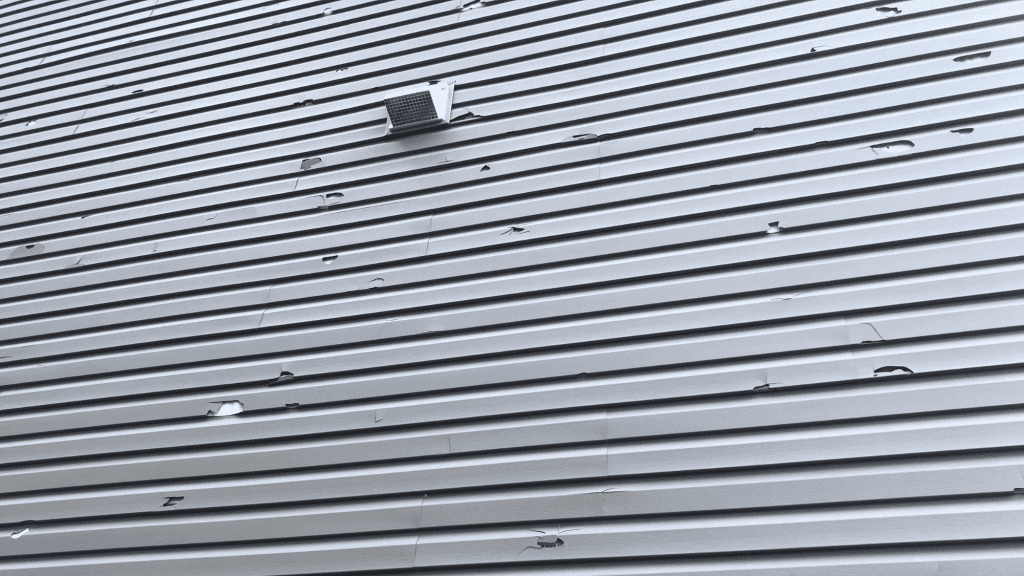
The importance of the insurance company becomes apparent when unforeseen occurs roof damage in Conesville, Ohio. Nevertheless, grappling with the intricacies of insurance coverage can prove to be a formidable challenge. Gaining insight into policy differentiations, such as Actual Cash Value (ACV) and Replacement Cost Value (RCV), and staying informed about prevalent exclusions can significantly influence the handling and ultimate settlement of your claim.
Policy Types: ACV vs RCV
When it comes to roof coverage, an Actual Cash Value (ACV) policy is tailored to facilitate the replacement process by reimbursing you for your roof’s depreciated value, minus the deductible. This means you’ll be compensated based on the current value of your roof at the time of the damage. However, it’s essential to note that this may not cover the entire cost of repairs or replacement.
On the flip side, a Replacement Cost Value (RCV) policy offers more extensive coverage. It covers the entire cost of roof replacement, providing funds for a new roof according to current prices and materials. Under an RCV policy, you’ll first receive a check for the actual cost value of your roof. After the completion of the roof replacement, a second check for the remaining amount will be issued, contingent upon meeting all specified requirements.
The choice of a suitable policy for your needs can greatly impact the payout you receive in the event of a roof damage claim, making it an important decision. It is essential to:
- Review your insurance policy
- Understand the differences between ACV and RCV
- Consult with your home insurance company to ensure you have the appropriate coverage for your specific situation.
Common Exclusions
Preserving your home from weather-related roof damage in Conesville, Ohio, with homeowners insurance is a wise choice, but it’s essential to be mindful of common exclusions that may affect your claim, such as:
- improper installation, where deviating from the manufacturer’s instructions or local building codes during roof installation can lead to accelerated wear and tear, potentially invalidating your roof’s warranty.
- Lack of maintenance is another exclusion to watch out for, involving neglecting routine roof upkeep such as cleaning gutters and removing debris. Damages resulting from inadequate maintenance may not be covered by your insurance policy.
- Additionally, specific weather events, like hurricanes or earthquakes, may be excluded from coverage in some policies.
A careful review of your insurance policy is crucial to understand these exclusions and ensure you have the appropriate coverage for your roof. Inadequate maintenance occurs when a roof is not regularly inspected and maintained according to the manufacturer’s instructions or local building codes, possibly resulting in premature deterioration and warranty invalidation.
Understanding these exclusions and taking proactive measures to ensure proper roof installation, regular maintenance, and protection from excluded weather events can help you avoid potential claim denials and ensure you receive the coverage you deserve.
Conesville Roof Damage - Filing an Insurance Claim
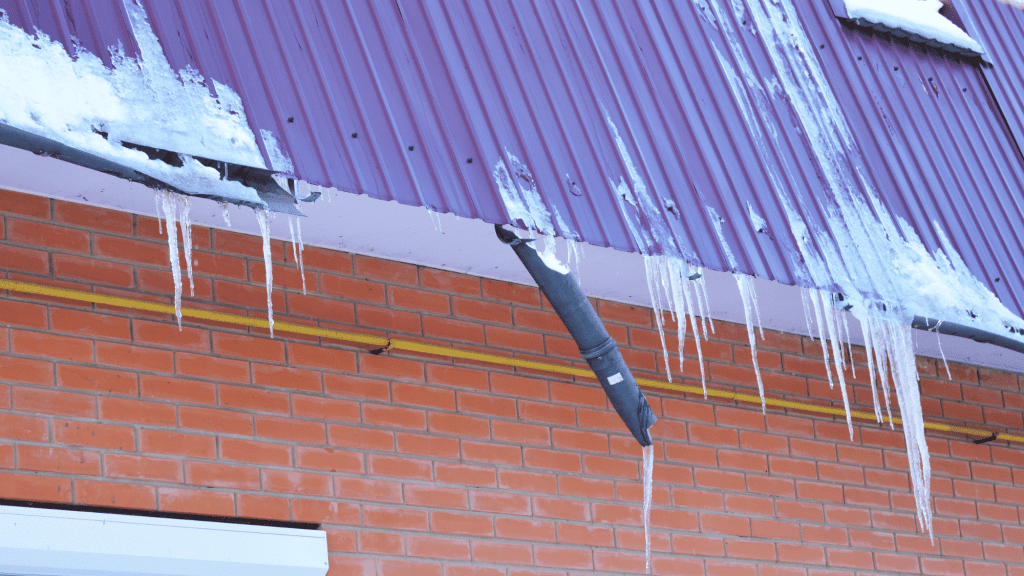
The journey of filing an insurance claim for roof damage in Conesville, Ohio, necessitates a nuanced and well-informed approach. Effectively documenting the damage, fostering a collaborative relationship with insurance adjusters, and making prudent decisions regarding roofing contractors are pivotal to a seamless claims process.
This comprehensive guide is designed to lead you through the necessary steps and provide valuable tips, ensuring a smooth and successful insurance claim experience.
Documenting the Damage
Preserving a meticulous record of roofing damage is vital before initiating an insurance claim. Here’s a step-by-step guide:
- Photograph the damaged areas extensively, focusing on any missing shingles, raised flashing, or damaged tiles.
- Create a detailed list of the damage, accompanied by comprehensive notes, including dates, times, and pertinent weather conditions contributing to the damage.
- If preventive measures have been implemented, such as the use of tarps on the roof, document these measures through photographs.
Following the documentation process, obtain an estimate from a qualified roofing contractor to determine the cost of repairs or replacement. This estimate not only provides clarity on the damage extent but also serves as essential documentation when filing your claim with the insurance company. A thorough and precise record of the roofing damage significantly enhances the chances of a successful claim.
Working with Adjusters
In Conesville, roof damage triggers a critical role for insurance adjusters in the claims process. These professionals evaluate the damage, determining the value of your claim payout. Successful claim outcomes depend on effective collaboration with adjusters, emphasizing the need for accuracy, meticulous record-keeping, and transparency throughout the process.
When faced with a denied claim, exploring resolution options is imperative:
- Requesting a different adjuster from your insurance company for a second opinion is one option.
- Consulting a structural engineer for a comprehensive inspection and evidence of the damage is another viable step.
- As a last resort, legal avenues can be pursued.
Understanding the adjusters’ role and preparing for effective collaboration significantly increases the chances of a successful claim. This ensures you receive the necessary coverage to repair or replace your roof, damaged in Conesville.
Choosing a Reputable Roofing Contractor
Opting for a trustworthy roofing contractor is crucial for ensuring top-notch work and a seamless insurance claims process. When exploring roofing contractors for insurance claims, it’s essential to assess their experience in dealing with claims, turnaround times, and their ability to collaborate with adjusters. A competent roofing contractor can meticulously document damage in line with insurance companies’ standards and offer an expert evaluation.
Choosing a local and dependable roofing contractor, such as Pine Ridge Roofing, ensures confidence in the handling of your roof repair or replacement. Their team of certified roofers and insurance specialists is dedicated to assisting with storm repair, restoration, and insurance claims in Conesville, Ohio, and nearby areas. Opting for an established roofing contractor guarantees the safety and integrity of your home.
Conesville Roof Damage - Preventative Measures and Maintenance
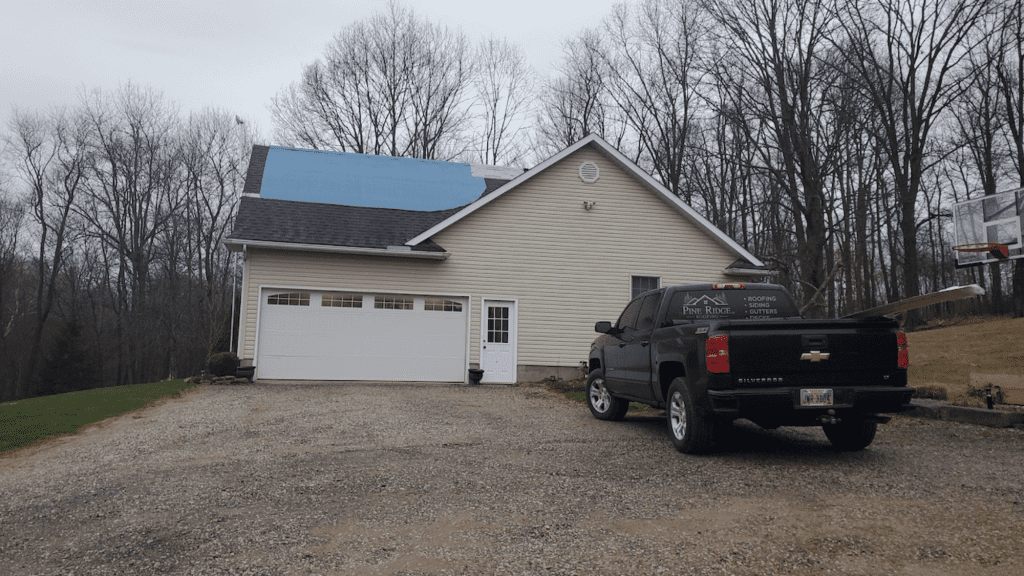
Safeguarding your home from the financial impact of weather-related roof damage, insurance offers a crucial safety net. Yet, to truly fortify your defense against costly repairs, it’s essential to adopt preventive strategies. Regular inspections, proper ventilation, and effective waterproofing emerge as key players in maintaining your roof’s robust condition. By incorporating these measures, you not only reduce the risk of weather-related damage but also enhance the longevity of your roofing structure.
Routine Inspections
Regular roof inspections serve as an effective method to spot and tackle potential issues before they escalate into significant problems. Inspections should evaluate the roof for signs of:
- Deterioration
- Missing or damaged shingles
- Debris in the gutters
- Roof ponding
To ensure the longevity of your roof, it’s advisable to schedule routine inspections, ideally twice a year or more frequently in regions with harsh weather.
By taking a proactive approach to maintenance, you can catch minor issues before they become major problems, saving you money on potentially expensive repairs. Pine Ridge Roofing offers free roof inspections, providing a reliable and expert assessment of your roof’s condition. Don’t wait—call us now to schedule your inspection and protect your investment.
Proper Ventilation and Waterproofing
To prevent the damaging effects of moisture buildup, ice dams, and other weather-related concerns on your roof, it is crucial to prioritize proper ventilation and waterproofing. Key practices include:
- Maintaining good indoor air quality
- Implementing effective home ventilation
- Utilizing exhaust fans and air purifiers
- Installing a reliable ventilation system
- Ensuring the proper attachment of roof ventilation products.
Neglecting these aspects may lead to issues like moisture accumulation and ice dams, potentially resulting in costly repairs and replacements. By prioritizing adequate roof ventilation and waterproofing, you can significantly reduce the risk of damage and extend the performance and lifespan of your roofing materials.
Pine Ridge Roofing: Your Partner in Roof Repair and Insurance Claims
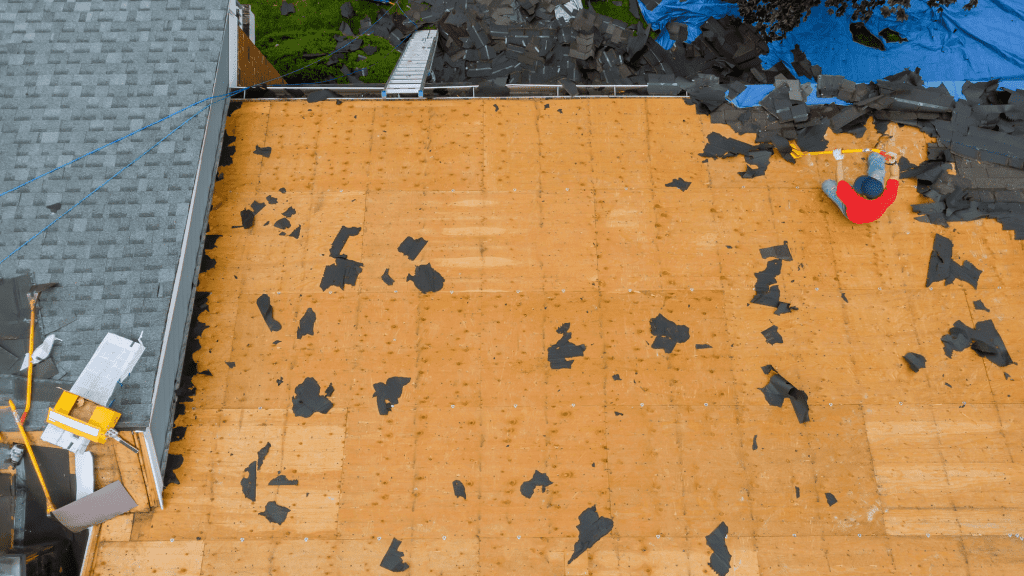
Pine Ridge Roofing, serving Conesville, OH, and surrounding areas, specializes in:
- Storm damage repairs
- Insurance claims
- Emergency inspection
- Tarping services
- Assistance with insurance claims for weather-related roof damage
- Roof replacements
- Siding repair and replacement
- Gutter repair and replacement
- Leaf Guard Installation
- Deck building
Boasting a cumulative experience of 25 years, our dedicated team of certified roofers and insurance specialists is focused on delivering exceptional roof repairs. We prioritize the protection and restoration of your home in the aftermath of any weather-related damage event.
Emergency Inspection and Tarping Services
If you suspect roof damage, arranging a complimentary emergency inspection with Pine Ridge Roofing is imperative. This inspection helps gauge the extent of the damage, aiding in informed decisions on necessary repairs or replacements. Our skilled professionals conduct a comprehensive evaluation of your roof, identifying issues such as missing shingles, raised flashing, or cracked tiles that may require immediate attention.
In addition to emergency inspections, Pine Ridge Roofing extends the following services:
- Our tarping services offer temporary protection, preventing further damage to your roof.
- Respond promptly by securing your roof with tarps to minimize the risk of additional damage.
- We ensure your home stays safe and secure throughout the insurance claim process.
Insurance Claim Assistance
Navigating the insurance claim process can be overwhelming, but Pine Ridge Roofing is here to help. They offer the following services:
- Assisting with insurance claims
- Representing homeowners
- Negotiating with insurance companies
- Providing quality roof replacement services
Their expertise in insurance claims ensures that you receive the best possible outcome for your claim, allowing you to focus on what matters most: the safety and well-being of your family.
Pine Ridge Roofing’s insurance claim assistance includes:
- Scheduling an emergency inspection
- Tarping damaged areas
- Representing the homeowner and meeting the insurance adjuster at the property.
- Negotiating with the insurance company
- Replacing the roof with top-notch products, such as Owens Corning shingles and synthetic felt
With Pine Ridge Roofing by your side, you can trust that your roof repair or replacement will be handled professionally and efficiently, giving you peace of mind in knowing that your home is protected.
Summary
Tackling roof damage in Conesville, Ohio caused by weather demands careful consideration from homeowners. It’s essential to discern the types of damage, skillfully navigate insurance claims, and proactively care for your roof. This extensive guide provides invaluable information. Teaming up with Pine Ridge Roofing, a reliable contractor, ensures you’re well-prepared to handle any weather-related roof damage, securing the well-being of your home and family.
Frequently Asked Questions
Does Home Insurance Cover Roof Storm Damage?
The extent of coverage for roof storm damage under your home insurance policy is determined by the details specified in the plan. Generally, insurance plans encompass protection against damage caused by hail, wind, destruction from falling objects, and internal damage due to roof storm damage. For instance, if a storm leads to the destruction of your roof and subsequent rainwater damage to the ceiling, your insurance policy is designed to cover the repairs for both the roof and ceiling.
Are blown-off shingles covered by insurance?
Insurance companies typically understand the importance of a roof and will cover the cost of roof replacement when shingles are blown off due to unpreventable circumstances.
What is considered wind damage to shingles?
The aftermath of strong winds often manifests in shingle damage, presenting as tearing, creasing, or outright detachment from the roof. In the case of three-tab shingles, the risk escalates due to repeated lifting or flapping. It’s crucial to recognize that unsealed shingles remain resilient unless subjected to evident physical mat damage.
My roof doesn’t leak. Does this mean my roof is okay?
Simply because your roof isn’t showing leaks doesn’t mean it’s in optimal condition. Roof damage can linger unseen, and leaks may not become apparent until a future rainfall. At Pine Ridge Roofing, our adept professionals utilize specialized tools and techniques to uncover moisture beneath roofing materials and identify hidden areas of damage. Don’t let concealed issues persist unnoticed—contact us for a free inspection today!
What is the most common roof damage?
Roof damage in Conesville, OH frequently manifests as leaks, typically attributed to issues like damaged shingles, improper flashing near chimneys or gutters, and surrounding vents or pipes.
